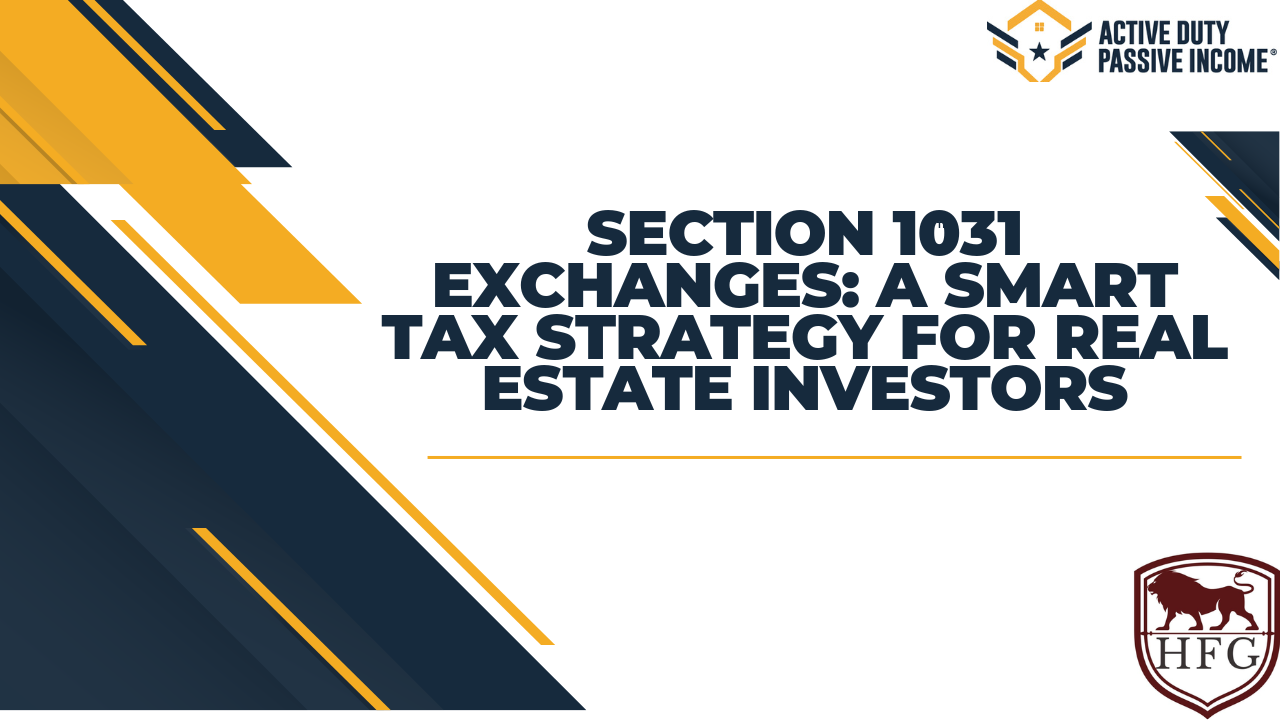If you’re a real estate investor looking to grow your portfolio while minimizing taxes, a Section 1031 Exchange might be the perfect tool for you. Named after Section 1031 of the Internal Revenue Code, this strategy allows investors to defer capital gains taxes when selling a property, provided that the proceeds are reinvested in a similar property. This can be a powerful way to build wealth over time by keeping more money working for you. Let’s take a closer look at what a 1031 exchange is, how it works, and the key things you need to know.
What Is a Section 1031 Exchange?
A 1031 Exchange is a tax-deferral strategy available to real estate investors. It allows you to defer paying capital gains taxes on the sale of an investment property if you reinvest the proceeds into another like-kind property. Essentially, this means you can sell one investment property and buy another without having to pay taxes on the gains immediately.
This tax-deferral mechanism is a significant advantage because it keeps more of your capital in play, allowing you to reinvest and grow your real estate portfolio without the drag of capital gains taxes.
How Does a 1031 Exchange Work?
To successfully execute a 1031 exchange, there are some important steps and rules to follow:
-
Like-Kind Property: The property you sell and the property you buy must be of like-kind. For real estate, this is broadly defined, meaning you can exchange one type of investment property for another, such as swapping an apartment building for a retail space.
-
Timeline: There are strict timelines involved. You have 45 days from the date of sale to identify potential replacement properties and 180 days to complete the acquisition of one or more of those properties.
-
Qualified Intermediary: You can’t handle the proceeds from the sale yourself. Instead, a qualified intermediarymust facilitate the transaction to ensure compliance with IRS regulations.
-
Equal or Greater Value: The new property (or properties) must be of equal or greater value to defer all of your capital gains taxes. If the replacement property costs less, you may end up paying some tax on the difference.
Benefits of a 1031 Exchange
-
Tax Deferral: The most obvious benefit is deferring capital gains taxes, which allows you to keep more money invested in your properties and build wealth faster.
-
Portfolio Growth: A 1031 exchange enables you to strategically grow your real estate portfolio by trading up to larger or more profitable properties without the immediate tax burden.
-
Diversification: Investors can use 1031 exchanges to diversify into different types of real estate, such as moving from a single-family rental to a commercial building, provided the properties meet the like-kind requirement.
Key Considerations
While a 1031 exchange can be a great tool, there are some important factors to consider:
-
Complex Rules: The rules governing 1031 exchanges are strict, and any misstep can trigger a tax liability. It’s essential to work with a qualified intermediary and a tax professional who understands 1031 transactions.
-
No Personal Use: The properties involved must be for investment or business use. You cannot use a 1031 exchange for your personal residence.
-
Potential Tax Liability: While the 1031 exchange defers capital gains, it doesn’t eliminate them. If you eventually sell the replacement property without doing another exchange, you’ll need to pay the deferred taxes.
Examples of 1031 Exchanges
-
Trading Up: Imagine you own a small rental property that has appreciated significantly. You could use a 1031 exchange to sell it and purchase a larger multi-family building, thereby increasing your income potential without triggering an immediate tax bill.
-
Geographic Relocation: If you want to relocate your investments from one city to another, you could use a 1031 exchange to sell your current property and acquire a new one in a different location.
Final Thoughts
A Section 1031 Exchange is a powerful tool for real estate investors looking to defer taxes, grow their portfolio, and maximize their returns. By deferring capital gains, investors can keep more of their profits working for them, fueling the growth of their real estate empire. However, due to the complexity of the process and the strict IRS guidelines, it’s important to work with professionals who understand 1031 exchanges inside and out.
If you’re considering a 1031 exchange and want to make sure you’re taking the right steps to maximize your benefits, please reach out to our office. We can help guide you through the process and ensure you’re in compliance while making the most of your investment.
If you’re considering a 1031 Exchange or want to strategize ways to maximize your tax benefits as a real estate investor, Holloway Financial Group is here to help. Their team specializes in tax-efficient planning and can guide you through the process to ensure compliance while optimizing your investments.
📲 Schedule a consultation today and take the next step toward growing your portfolio with confidence!







